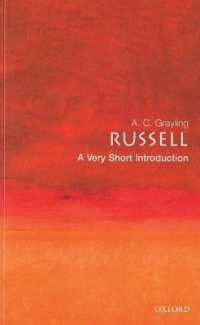Full Description
The African American Great Migration novel emerged as a popular mode of fiction in the 1920s. Not surprisingly, the decade that saw both the Harlem Renaissance as well as the thunderous onset of the Jazz Age also provided the backdrop for Black migrant stories of personal triumph and transformation set in the symbolically potent urban landscape of America's iconic cityscapes. While these novels represented the powerful symbol of the northern city as a proverbial Promised Land, they also reflected the urban pastoral conflict that defined the Black migrant experience. These novels marshaled a variant of the urban pastoral mode that historian Michael Denning has termed the "ghetto pastoral."
In Though There Be Giants: The Ghetto Pastoral Mode in Black Migration Novels, Donald M. Shaffer advances Denning's concept of the ghetto pastoral to examine the ideological tension between rural and urban modes of experience in these novels. Through close readings of Paul Laurence Dunbar's Sport of the Gods, James Weldon Johnson's The Autobiography of an Ex-Colored Man, Nella Larsen's Quicksand, Walter White's Flight, Jean Toomer's Cane, and Ralph Ellison's Invisible Man, Shaffer demonstrates how these texts destabilize concepts of race and identity even as they attempt to locate "Blackness" in the spaces and places of the northern city. Shaffer traces the historical and critical link between racial uplift novels of the late nineteenth century and Black modernist novels of the mid-twentieth century. This work thus examines a key figure of African American modernity: the liminal Black migrant standing at the proverbial crossroads of southern folk culture and the transformative cultural spaces of the northern city. This figure defines not only a generation of Black artistic expression but also stands as the culmination of the African American literary tradition.








